When I talk to parents about photographing their children, they often complain that they want to take better photographs but they don’t have a very good camera.
I tell them that you can take much better photographs with the camera you already have, before you need to splash out on a new rig. Most of these tips, for example, don’t rely on gear of any particular sort and will definitely improve your images.
I really like taking pictures with my old iPhone 3G which has a famously bad camera (even for a phone), and I’m happy with quite a few of the results.
So I thought I’d test out my assertion that the camera doesn’t matter as much as people think by shooting one day of a recent trip to Disneyland with an older point and shoot – a Canon Powershot SD500 (approx eBay value $40) and shoot the next day with my Canon 5D and a couple of good lenses (approx eBay value $900 for the body, and a total of $1100 for the lenses).
(In case you think I sacrificed priceless family pics for this test, this is the third time we’ve been to Disneyland, and with the in-laws living in LA, it definitely won’t be the last, so each image didn’t have to be a keeper.)
Day 1 – point and shoot
One definite plus for the little Elph is its size. It was liberating to be walking around without a heavy SLR around my neck, although I do it so often I’d forgotten what it felt like not to be carrying a brick with me.
And I got some shots that I was reasonably happy with – they’re not staggeringly good, but they captured moments from the day OK.
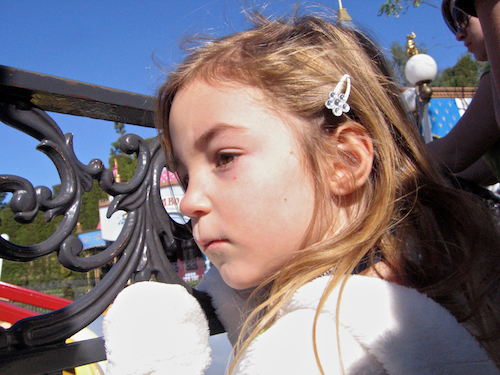
But a couple of things were instantly apparent. One was that it was much harder to see what I was photographing – the viewfinder was tiny, and bright sun on the LCD meant I couldn’t use that for composition either.
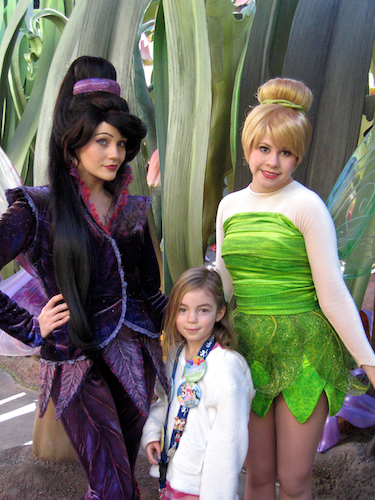
The other instantly notable feature was the sluggishness between focusing and actually taking the photograph, and the lag before you could take a second image. Rather than firing off three or four shots of a our daughter with the characters, I was lucky to get one or two.
And I was never sure if the picture was actually taken when I depressed the shutter, or a short while after.
If you’re not completely in control when you shoot, and can’t take as many shots then the odds are less good that you’ll get a keeper.
I try not to ‘spray and pray’, but there are some times when it’s the best way to ensure you got the shot (like when your daughter’s wearing her yellow princess dress while flying down the Grizzly River Run and getting soaked).
Lack of Control
This is another big issue. With my wife and daughter riding on the Teacups I wanted to try to communicate the giddy speed by using a deliberately slow shutter speed to blur some movement (and then pan the camera to try and keep the subject in focus), but the Powershot wasn’t letting me.
So the teacups shots with it were just OK, but the wide depth of field (pretty much everything is in focus) and lack of blur take away from the drama.
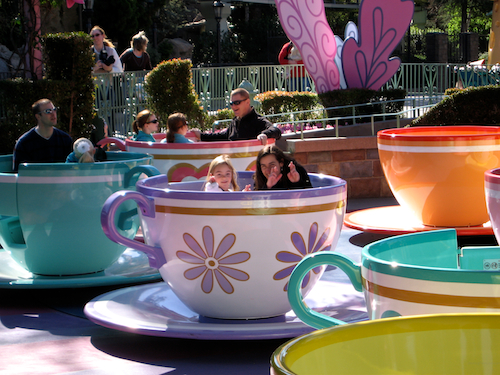
Back in the evening
So during the day, the little camera was just about acceptable so long as the photos I wanted to take were the ones it wanted me to.
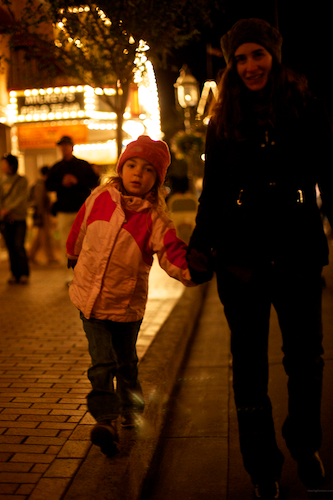
We returned to the park in the evening, and this time I brought the 5D and a 50mm f/1.4 lens. The Powershot’s maximum ISO was 400, and the widest aperture was f/2.8 so there was no chance I was gettting any shots in the near-dark without using the flash – which would have produced unpleasantly unatmospheric shots.
More recent point and shoots do much better in low light, and while the 5D (mine’s the original model, not the Mark II) is only OK in dodgy light (for a high-end SLR), the fast f/1.4 prime gives you a setup it would be pretty much impossible to replicate with a point and shoot.
This simple shot of walking down Main Street (taken at 1600 ISO and f/1.8) just works so nicely – bokeh-ed background, subjects motion captured without blur, nice warm tones – and it’s exactly the sort of image the point and shoot would struggle with .
Next Day
The next day we were back in the park with the 5D and this time the 24-105mm f/4 L lens attached. And I was much happier. I could shoot small bursts of shots of my daughter with the characters, and the quality of the images produced was much higher – the colors and contrast deeper, and the sharpness much improved.
It felt like the camera was helping me get the image I imagined, rather than forcing me to take the pictures it felt comfortable with.
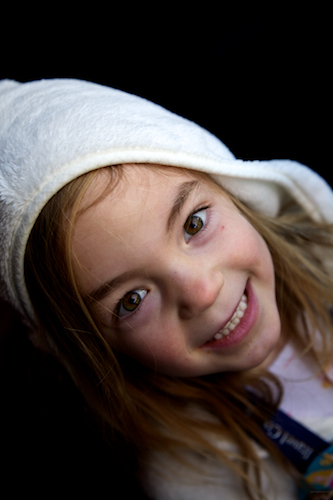
Conclusion
Obviously this wasn’t really a test to see which of the two cameras is better, or even which I would prefer to bring with me to Disneyland. Any digital SLR offers much greater flexibility and image quality – I wonder how a decent Micro Four Thirds camera would fare.
I did this test party to remind me of the great strengths of SLRs – creative control, narrow depth of field, low-light capabilities, option to use a range of lenses, overall image quality.
But I also did it to see whether I could wring half-decent shots out of a not-so-good camera. And it’s certainly possible.
The technical image quality isn’t there with the old SD500, but if I wasn’t printing the files too big, I wouldn’t care too much. And I’m much happier to have the good if slightly imperfect shots I did get than not to have any at all.
So if you’re not shooting much because you don’t have the camera you’d like, just shoot with what you’ve got. You won’t get as many keepers as if you were shooting with a better camera, but you’ll get a lot more than not taking any photos at all. As the old saw goes, the best camera in the world is the one you have with you.
But if you’re already shooting a lot with your current camera and find yourself constrained by its limitations, now might be the time to make a jump to a new best friend.
Finally, here’s the sort of teacups shot I wanted to get:
